Text

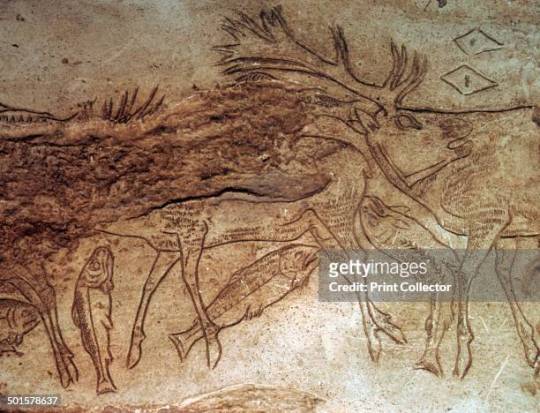


Antler engraving found in Lortet Cave in the Hautes-Pyrénées region of France. It was carved from a reindeer antler and shows a group of reindeer crossing a river or lake full of swimming salmon. Dating to the Magdalenian period, approximately 17,000-12,000 years ago.
9K notes
·
View notes
Photo

Venus of Renancourt, around 21,000 BC, Gravettian culture, Upper Paleolithic
605 notes
·
View notes
Photo

Carved Female Head from Dolni Vestonice, Czech Republic. Gravettian culture, Upper Paleolithic
176 notes
·
View notes
Photo


Examples of decorated Palaeolithic adornments:
Top: an incised bone disc ready for suspension on either side, from L'abri Montastruc, France (Magdalenian). Discs such as these were often made from a thin piece of scapula, usually a cervid and are generally rather small (4-5 cm in diametre).
Bottom: a bracelet made from hollowed out ivory decorated with fretwork and punctured holes for wrapping around the wrist, from Mezine, Ukraine (Gravettian).
*Barandiarán Maestu, I. 2006. Imágines y adornos en el arte portátil paleolítico. Barcelona: Ariel Prehistoria
204 notes
·
View notes
Photo

Figurine of woman found at Brassempouy, France, mammoth ivory, ca. 25,000 years old. It is one of the earliest known depictions of the human face.
Musee d'Archeologie Nationale, St. Germain-en-Laye
540 notes
·
View notes
Photo

Archaeologists Uncover Upper Paleolithic Proto-Writing System
https://www.sci.news/archaeology/upper-paleolithic-proto-writing-system-11546.html
#news#signs#this is so fascinating! im still reading the paper but its very exciting.#basically it suggests that series of lines or dots represent lunar months#and branching Y signs show what time of year the associated animal has their young#edit: having finished the paper it actually correlates very strongly across species. very fascinating.#definitely recommend reading the article and going to the [free to access] paper linked at the end#and at least skimming thru and checking at the tables if youre interested
15K notes
·
View notes
Text

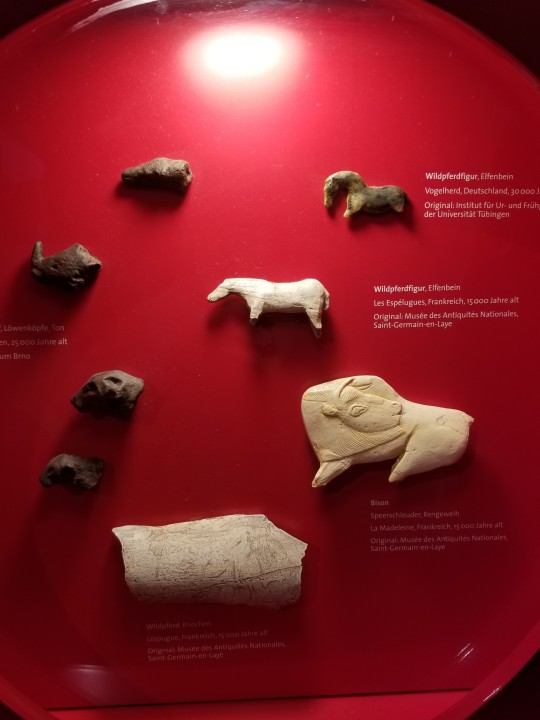




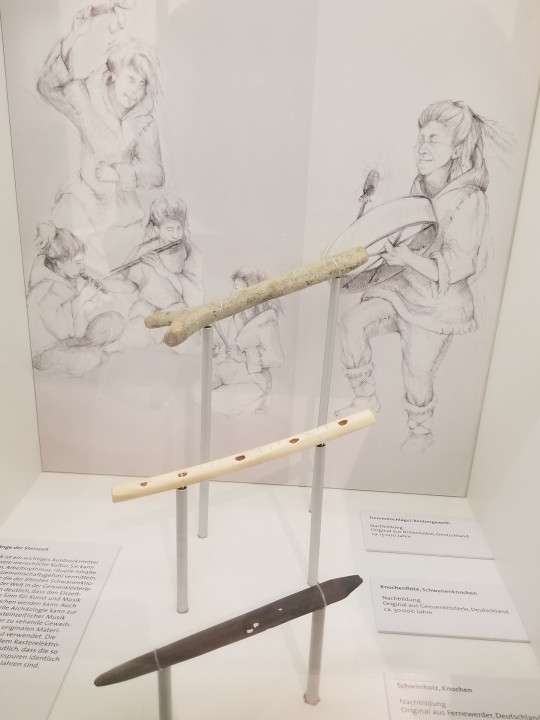


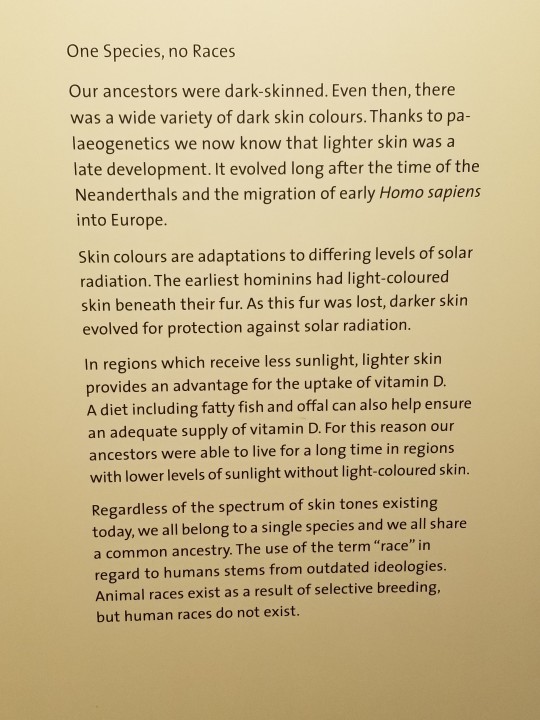
We went to the Neanderthal museum yesterday, which is also the place where they discovered the first Neanderthal, or at least recognized it as such anyway. It was such a beautiful exhibition and the sculptures felt so alive. It gave me Big Feels and made me feel so close to these humans that once excisted.
Part 5
391 notes
·
View notes
Photo

This Magdalenian horse in Niaux Cave in southwest France is between 17,000 and 11,000 years old. Photo by Heinrich Wendel
6K notes
·
View notes
Text
« A closer look at some of the examples of messy and tactile activities from the Ice Age, perhaps unsurprisingly, reveals the presence of children. Once assumed to be the enigmatic marks made by trance-induced shamans practising some otherworldly hunting magic, archaeological research is increasingly showing that making cave art was a social, group-wide behaviour – and children were active participants.
A recent study by a team of researchers in Spain found that hand-stencils made deep within caves represent all members of society. Children, and even infants younger than three years old, participated in making hand-stencils alongside adolescent, adult and elderly individuals. The youngest undoubtedly would have had to be held still by an adult as ochre was sprayed over their hand to produce the stencils, giving an intimate glance into the making of this art. As discussed by the authors of this study, the social nature of this behaviour suggests that the making of art was not limited to a privileged few, but was an activity that involved everyone, enhancing group cohesion in the process. […]
Making hand-stencils seems to have been a practice that was repeated by different cultural groups throughout the Ice Age world, from the caves of Pech Merle and Gargas in modern-day France to Leang Timpuseng cave in Sulawesi. […] Even within the same cave, hand-stencils may be separated by several thousand years, implying that people returned to the same place and added their hands to the assemblage of their ancestors’ hands. This behaviour was likely a visceral experience for Ice Age people; an ancient form of handshake between hands reaching through time, and a more-or-less permanent record of having been there. […]
How much more meaningful is it, then, that children actively participated in this important cultural practice? Not only did adults install themselves within these environments, engaging with the hands left by their ancestors in the process, but they encouraged their children to do so too. […] Echoes of children’s playful behaviours can also be glimpsed in […] finger flutings – marks made by tracing fingers through the soft clay-like ‘moonmilk’ that coats cave walls. [They] were often made by children, perhaps as young as five years old. There is a distinctly childlike feel to these ribbon-like marks preserved in the cave wall; one can picture children running alongside the wall, fingers firmly pressing into the pliable, muddy surface.
[…] Children’s footprints are also often present in the same caves […]. The footprints are sometimes chaotic, with small feet overlapping one another and no clear direction from one area of the cave to another. Some have suggested this represents children dancing, painting a vivid image of children playing under the dim glow of firelight. Small crawl spaces within caves, too, were perhaps only accessible to children. The small, clumsy drawings within these spaces likely reflect children practising their own art […].
Ice Age children, much like our own children, joyfully engaged with the world in messy and creative ways – and, it seems, were actively encouraged to do so by their parents. These hand-stencils create an intimate connection with these children. Their small hands, which last touched the rock surface of cave walls tens of thousands of years ago, reach out to us from that distant and largely unknowable past. It is as if they are enticing us to connect with them and reach back in response: a tender handshake across time. »
— Izzy Wisher, “The art of Ice Age children offers a tactile sense of the past”
9K notes
·
View notes
Photo
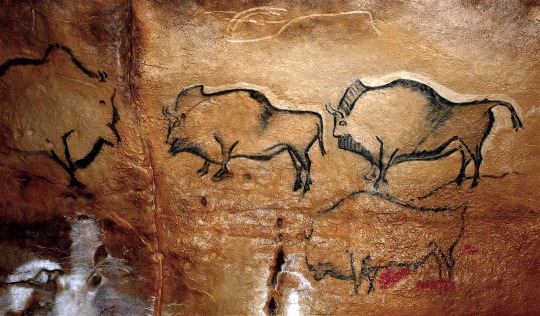
Covaciella cave, Asturias, Spain,
Discovered by chance in 1994, it contains the best conserved representation of bison anywhere in Asturias, due to the fact that the cave was sealed up for thousands of years. Its 40-metre gallery has paintings dating back more than 14,000 years.
2K notes
·
View notes
Photo
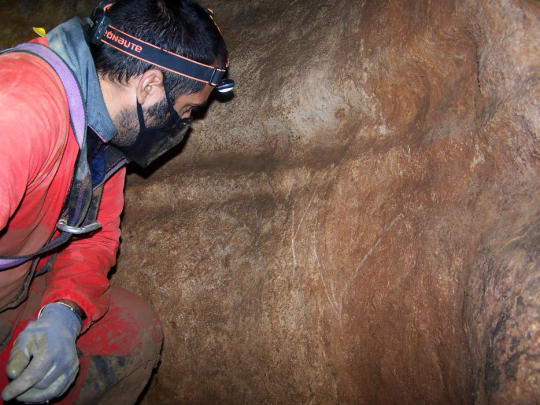


This week, new engravings have been discovered in Alkerdi cave, Urdazubi (Nafarroa).
They’re around 25,000 years old and what makes them especially valuable and unique is that they seem to be sketches, practice works by a learning artist, defying the idea that the walls were reserved just for the masterpieces, not the previous studies.
There can be seen bisons, aurochs, horses [pics 2 & 3] and other animals, as well as several vulvae [pic 1], a very uncommon motif found in very few places across Europe.
Sources: 1, 2
2K notes
·
View notes
Photo

Vénus of Lespugue, from the grotte des Rideaux, Lespugue, Haute-Garonne, Paleolithic, – 23 000 years. Mammoth ivory, 14,7 × 6 × 3,6 cm. Musée de l’homme, Paris © MNHN – Jean-Christophe Domenech.
1K notes
·
View notes
Photo
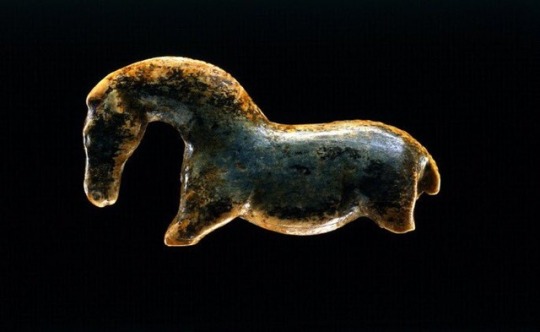
The Vogelherd horse – the oldest known sculpture of a horse. It was crafted in woolly mammoth ivory with flint tools over 35,000 years ago in southern Germany.
5K notes
·
View notes
Photo


Horse of Lourdes, found in the Grottes des Espélugues (Lourdes, Hautes-Pyrénées, c. 13,000 BC). It is made of mammoth ivory and is 7.3cm in length.
This horse carving was found in a rock fissure in 1886. The Espélugues Caves were very much frequented, and many other tools and decorated objects have been found there. The statuette was carved longitudinally from a mammoth tusk; such tusks could reach three metres in length.
443 notes
·
View notes
Text
Origin of the 30,000-year-old Venus of Willendorf discovered

The almost 11-cm-high Venus figurine from Willendorf (Austria) is one of the most important examples of early art in Europe. It is made of a rock called oolite that is not found in or around Willendorf. A research team led by the anthropologist Gerhard Weber from the University of Vienna and the two geologists Alexander Lukeneder and Mathias Harzhauser as well as the prehistorian Walpurga Antl-Weiser from the Natural History Museum Vienna have now found out with the help of high-resolution tomographic images that the material from which the Venus was carved likely comes from northern Italy.
This sheds new light on the remarkable mobility of the first modern humans south and north of the Alps. The results currently appear in Scientific Reports. Read more.
1K notes
·
View notes
Text
"Rising sea levels are gradually effacing the cave’s display of 177 exquisite and irreplaceable paintings and engravings, dating back to 27,000 BC but Fugro will use their Geo-data scanning technology to create a permanent record of huge cultural significance."
41 notes
·
View notes
Photo
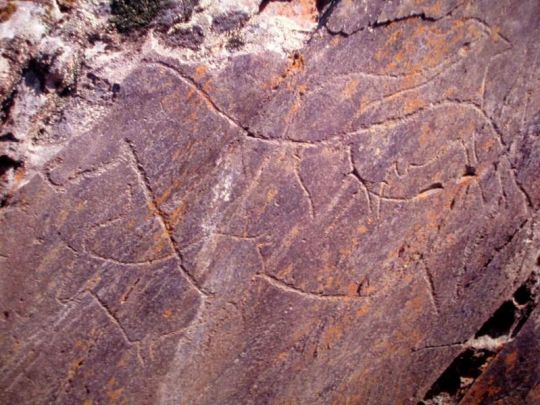
Stone engraved drawings representing several zoomorphic creatures, most notably a horse, Prehistoric Rock-Art Sites of the Côa Valley, Portugal, circa 24000-22.000 Before Present.
164 notes
·
View notes